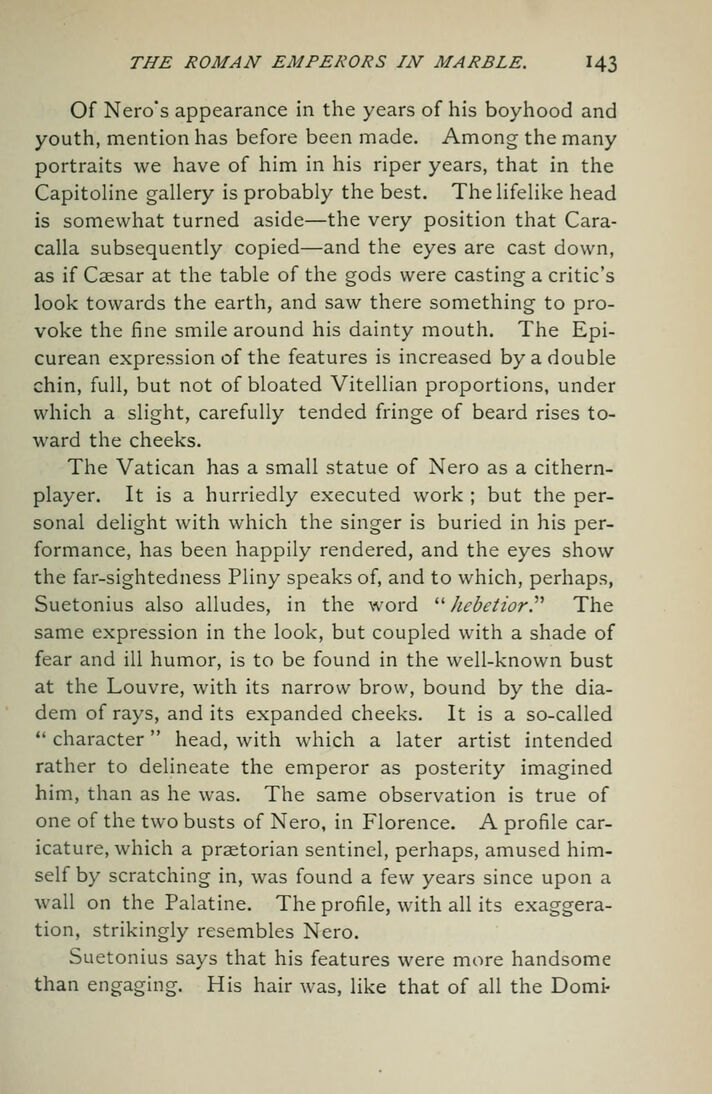
Full resolution (JPEG) - On this page / på denna sida - The Roman Emperors in Marble - 5. Nero

<< prev. page << föreg. sida << >> nästa sida >> next page >>
Below is the raw OCR text
from the above scanned image.
Do you see an error? Proofread the page now!
Här nedan syns maskintolkade texten från faksimilbilden ovan.
Ser du något fel? Korrekturläs sidan nu!
This page has never been proofread. / Denna sida har aldrig korrekturlästs.
THE ROMAN EMPERORS IN MARBLE. I43
Of Nero’s appearance in the years of his boyhood and
youth, mention has before been made. Among the many
portraits we have of him in his riper years, that in the
Capitoline gallery is probably the best. The lifelike head
is somewhat turned aside—the very position that Cara-
calla subsequently copied—and the eyes are cast down,
as if Caesar at the table of the gods were casting a critic’s
look towards the earth, and saw there something to pro-
voke the fine smile around his dainty mouth. The Epi-
curean expression of the features is increased by a double
chin, full, but not of bloated Vitellian proportions, under
which a slight, carefully tended fringe of beard rises to-
ward the cheeks.
The Vatican has a small statue of Nero as a cithern-
player. It is a hurriedly executed work ; but the per-
sonal delight with which the singer is buried in his per-
formance, has been happily rendered, and the eyes show
the far-sightedness Pliny speaks of, and to which, perhaps,
Suetonius also alludes, in the word " Jiebetior^’’ The
same expression in the look, but coupled with a shade of
fear and ill humor, is to be found in the well-known bust
at the Louvre, with its narrow brow, bound by the dia-
dem of rays, and its expanded cheeks. It is a so-called
" character " head, with which a later artist intended
rather to delineate the emperor as posterity imagined
him, than as he was. The same observation is true of
one of the two busts of Nero, in Florence. A profile car-
icature, which a praetorian sentinel, perhaps, amused him-
self by scratching in, was found a few years since upon a
wall on the Palatine. The profile, with all its exaggera-
tion, strikingly resembles Nero.
Suetonius says that his features were more handsome
than engaging. His hair was, like that of all the Domi-
<< prev. page << föreg. sida << >> nästa sida >> next page >>